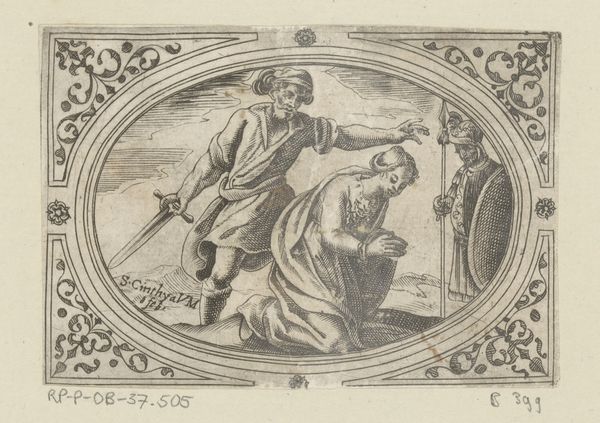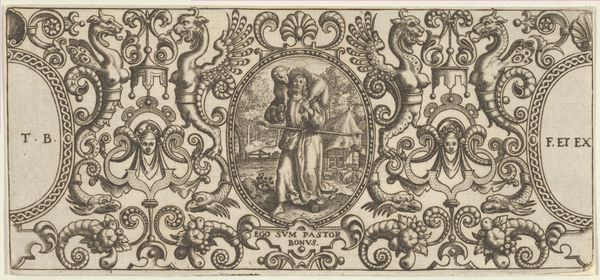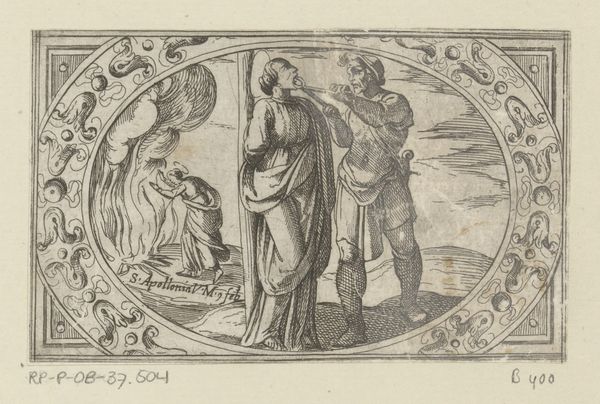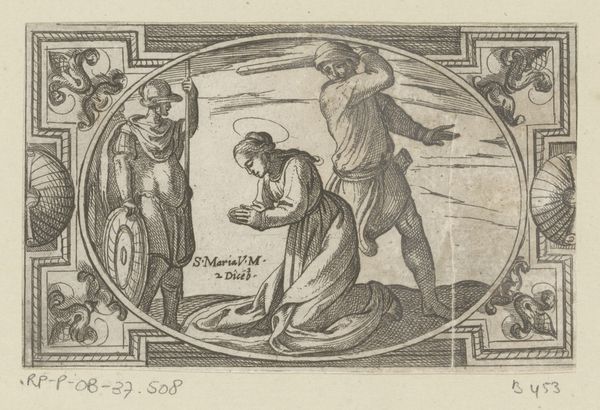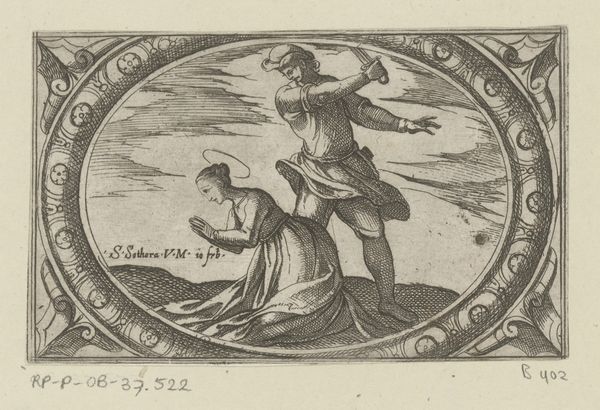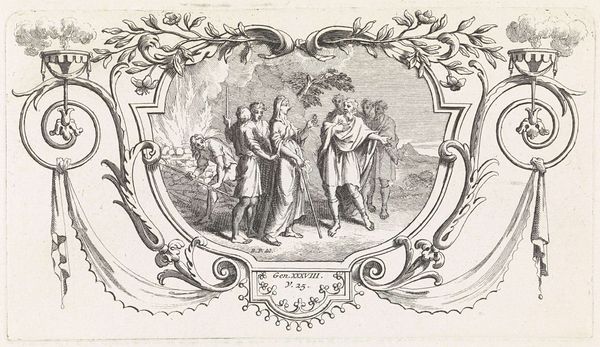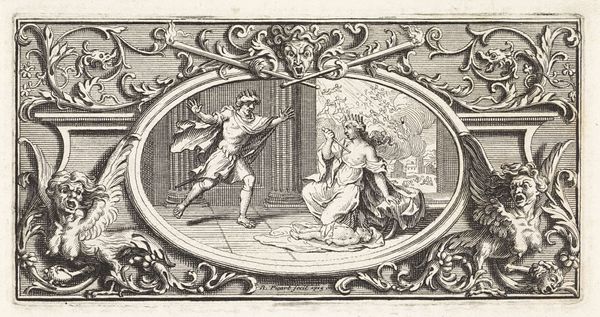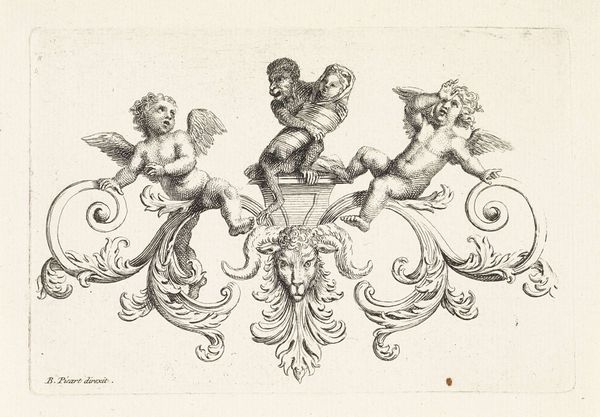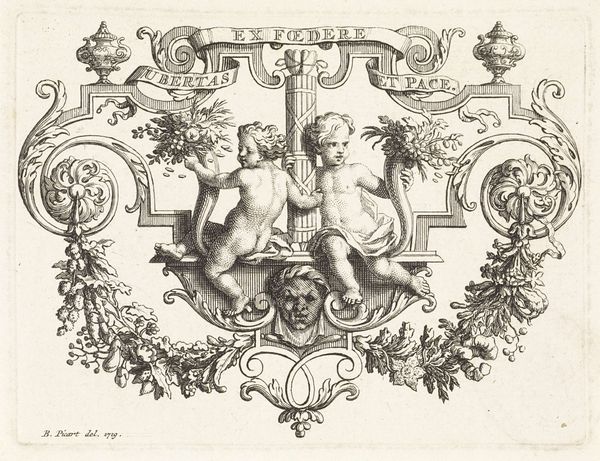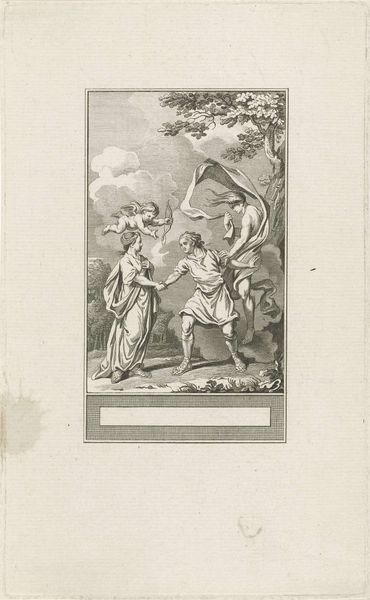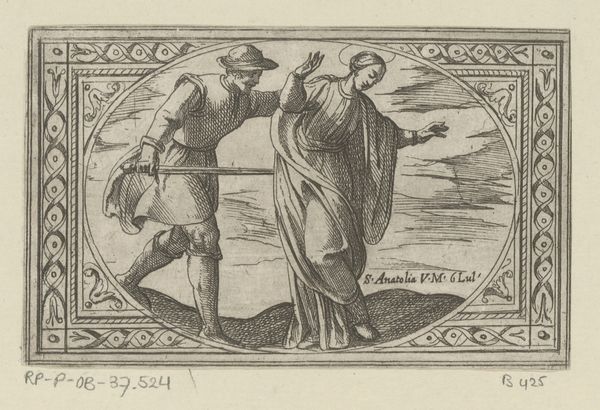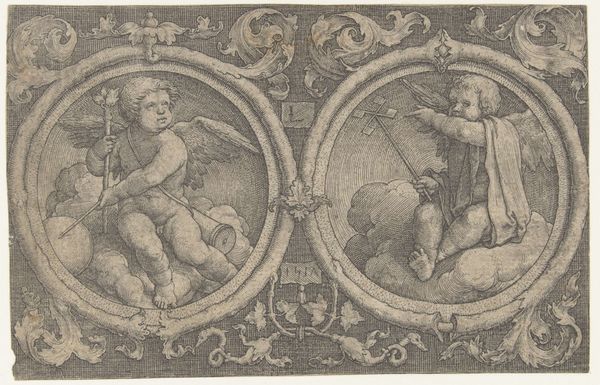
drawing, etching, ink
#
portrait
#
drawing
#
narrative-art
#
baroque
#
pen drawing
#
etching
#
figuration
#
form
#
ink
#
line
#
genre-painting
#
history-painting
Dimensions: height 104 mm, width 145 mm
Copyright: Rijks Museum: Open Domain
This is "Dancing Peasants", an etching made by Pieter Nolpe in the 17th century. With nothing but a metal plate, acid, and a sharp tool called a burin, Nolpe has captured a lively scene. Notice the way the fine lines create a sense of depth and texture, from the folds in the dancers' clothes to the ornate frame surrounding them. The etching process itself is fascinating. The artist would have painstakingly scratched lines into a wax-coated plate, then submerged it in acid to bite into the exposed metal. The depth of the lines determines how much ink they hold, and thus how dark they appear in the print. It’s a labor-intensive process, requiring immense skill and precision. But what does this process tell us about the artwork's social significance? Etchings like these were relatively affordable, making art accessible to a wider audience. The image of dancing peasants offers a glimpse into the lives of ordinary people, celebrating their joy and resilience. Nolpe elevates a humble subject through a meticulous and skilled practice, blurring the lines between high art and everyday life.
Comments
No comments
Be the first to comment and join the conversation on the ultimate creative platform.
